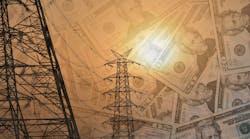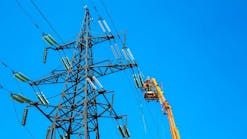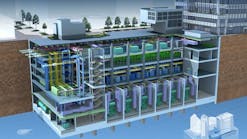Driven by the replacement of aging infrastructure, reliability improvements and growth in renewable energy and new natural gas power; transmission investment continues to be strong. From my research, projects valued at $129.6 billion are in planning or under construction -- $98.4 billion are expected online during the next five years. Just over $20.2 billion are under construction. I am tracking 72 projects with estimated costs > $100M, all are on track to be completed over the next two years. Of those projects, 32 (44%) are currently under construction.
My research aligns closely with Edison Electric Institute’s projections from their Annual report, Transmission Projects: At A Glance, published in December 2016. EEI forecasts investment to peak at $22.5 billion in 2017, then decline slightly to $21 billion in 2018 and $18.5 billion in 2019.
A combination of factors has supported investment in recent years including: relatively flat electric rates driven most by low natural gas and coal prices. With less cost pressure on customers, utilities have taken advantage of relatively low interest rates and have invested more in infrastructure. Of some concern, the U.S. Treasury 30-year bond yield is hovering around 3% today up from lows near 2% in July of last year. After a rebound in the fall after the general election, rates have remained around 3% since. There is some concern rates could continue upward, which could impact utility investment decisions during the next couple years. As for now, rates are still highly supportive of investment, but something to keep a keen eye on.
Renewables and Nat Gas Dominate the Future of Power Generation
The rapid growth in wind and solar power has also spurred development in transmission and substation construction. Driven by the 2015 extension of the wind supported production tax credit (PTC) and the solar supported Investment Tax Credit (ITC), the incentive to build wind and solar has resulted in a significant build-out in recent years. According to a very illuminating article published by Bloomberg on April 27, 2017, titled “The Cheap Energy Revolution Is Here, and Coal Won’t Cut It,” wind has grown by 262% since 2008, and as of the end of 2016 accounts for 80 GW of U.S installed capacity.
Solar has grown by an astounding 4,645% since 2008 and now accounts for over 40 GW of total installed capacity. Utility-scale wind and solar projects are generally located in remote areas where they need new infrastructure to connect to the grid. According to a recent Navigant study, annual global investment on transmission system infrastructure for large-scale renewable energy integration is expected to reach $46.7bn in 2025 – up from an estimated $36.7bn in 2016
In addition to the surge in wind and solar power expected over the next several years, there are several coal-to-gas plant conversions and new natural gas projects in the pipeline – all needing some level of transmission and substation upgrades. According to the Bloomberg report, coal retirements since 2007 have taken out an estimated 775 TWh/yr in electric output. During the same time, natural gas power has added 483 TWh/yr while new renewable projects have added 256 TWh/yr. All this new infrastructure is demanding upgrades and new construction of line segments, substations and switching yards.
Tax Reform – Double-Edge Sword
What could be a boost or possible problem for infrastructure development is the recently proposed tax reform. The reduction in the corporate tax rate from 35% to 15% on the surface looks good, but for most utilities that finance large projects with debt, the doing away of interest and property tax deductions, as well as a requirement to fully depreciate investments in the first year, could result in significant pass through costs to customers. New reforms favor equity financed arrangements and discourage debt financing. But even with this backdrop, tax reform is needed to lessen the burden on businesses and open the door for investment in U.S. infrastructure.
One concept that would help stimulate investment is the incorporation of the destination based cash flow tax (DBCFT), which would only tax economic activity in the United States – a consumptive tax approach. One of the advantages of this tax concept is the allowance for U.S. multi-national companies that currently park their overseas earnings, estimated at over $2.1T, to be able to invest that money in the US without incurring the current high tax burden. There could be ‘strings’ or added incentives that would open some of the repatriated cash to be earmarked strictly for infrastructure projects.
One thing is for certain, tax reform is complex and there are plenty of things that could go wrong. The transition could take a great deal of time so as not to disrupt highly leveraged existing infrastructure investment. Changes in the tax structure have profound effects on the highly capital intensive utility industry so we’ll be keeping a close eye on how the proposed tax reform evolves.
Some Challenges on the Horizon
One of the key challenges to infrastructure investment is the prolonged decline in electric demand which has disconnected from growth in GDP in recent years. During their May 5 annual shareholder meeting, Entergy’s CEO Leo Denault commented on the company’s strategy which includes a weaning away from coal toward natural gas and renewables, as well as an increase in energy efficiency programs. Denault added, “The cleanest MW you make is the one you don’t make.” The economy is growing at a nice clip with less power production, which will affect overall investment decisions during the years to come.
On another front, what’s turned out to be the primary concern to developers and financiers is the long process of gaining permits and right-of-ways. The Trump administration’s pro-investment strategy is expected to support a faster development process, which will help some of the major interstate and international long-haul projects move forward.
Overall the challenges facing infrastructure investment are small compared to the upside. Regulated utilities earn a guaranteed return on capital investments, which supports continued investment. Much of the North American electric grid’s estimated asset value of $1.5T to $2.0T is in need of repair and upgrades. Joshua Rhodes, researcher of energy at the University of Texas, in a recent study, estimated the replacement cost of the grid based on depreciated value would be near $5T. According to Rhodes' study, the replacement cost of transmission and transformers alone would exceed $2T. The American Society of Civil Engineers has rated the entire energy infrastructure sector with a grade of D+, which means there’s a lot of enhancement work needed in the years to come.
Expect Continued Strong investment in Transmission
Despite the myriad challenges facing project development, there is a strong need to replace aging infrastructure and the economic climate is good right now. Edison Electric recently provided early estimates of grid infrastructure investment by its members in 2016. They estimated total investment in 2016 at $121bn – with transmission accounting for more 27% of that spend. Expect development and construction to continue at a good pace over the next several years.
In future editions of ‘Projects in Progress,' we’ll continue to address the changing investment climate for transmission and distribution.


